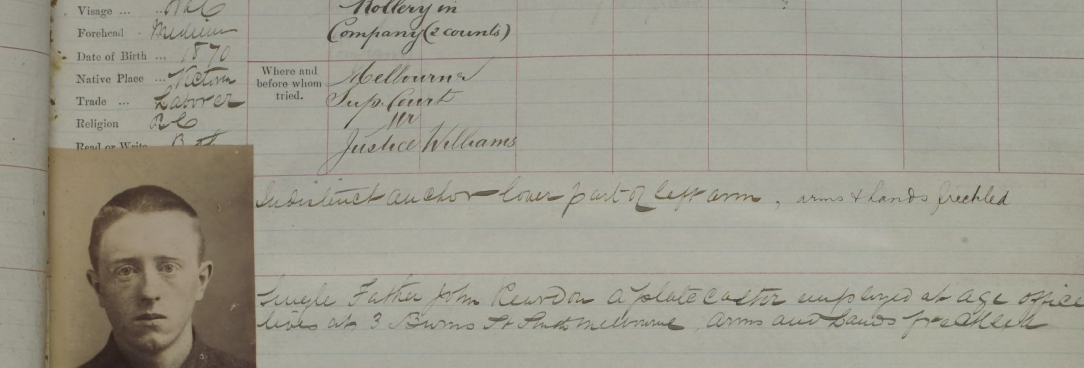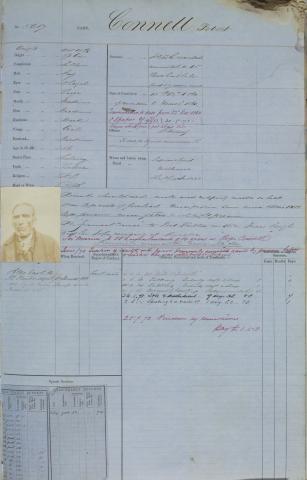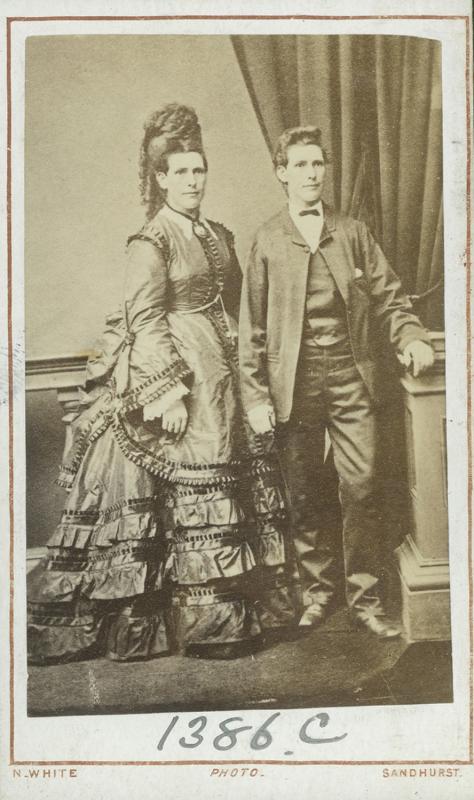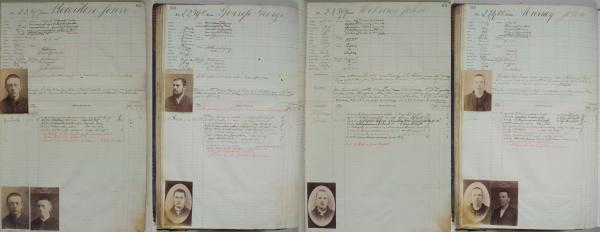
Author: Public Record Office Victoria
A display about Bendigo’s Queer History will open on the 1st of March at Bendigo Library in Hargreaves St, Bendigo. The exhibit, which will run until the 28th of March, is part of Bendigo Pride, a festival highlighting Queer life in Central Victoria and encompassing a range of activities including theatre, art, film, workshops, and performances.
The Bendigo Library exhibit will include a selection of posters, badges, literature and ephemera showcasing local and regional LGBTQI+ history. A few PROV 19th and 20th century records will be included as part of the display. Curator Dr Wayne Murdoch says that this material on Queer lives is rare and can be difficult to find:
“Ordinary sources of information that historians use about people’s lives, such as letters, diaries, and photographs, simply don’t exist for the Queer past. Any incriminating material which fell into the wrong hands could be used as a source of blackmail or legal evidence of a crime which for men was not decriminalised in Victoria until 1981. If people did keep records of their lives, it was often destroyed after their deaths by families who were keen to ‘straighten up’ the story.”
This means that one of the most important sources of information about Queer lives in the 19th and early 20th centuries is material produced by the legal systems when prosecuting men for same sex activities. These include court records, criminal trial briefs, and prisoner registers found in PROV's collection. Even these, says Dr Murdoch, have their limitations.
“I’ve found in my research on 19th and early 20th century prosecutions for homosexual offences that consenting adults in private were very rarely prosecuted; it was difficult to get a conviction as the parties had to have been caught in the act or one party would otherwise had to have made a complaint. Most of the cases of prosecutions for male/male sexual activity prior to the Second World War were for offences involving some form of violence or coercion, as was the case with Robert Connell, who apparently tried to get into bed with a sleeping roommate at the St Agnes Hotel, Kyneton.”
Far from the 19th and early 20th centuries being a time of widespread prosecution and persecution of consenting adult men, Dr Murdoch says the police and the courts appear not to have been particularly interested in seeking out instances of male/male sex. Widespread police persecution really only came about in the period after the Second World War when homosexuals were seen as being potential security risks and a negative influence on “normal” social values.
Dr Murdoch says that tracing lesbian lives in the 19th century is even more difficult than researching men’s lives.
“Relationships between women were never criminalised, and so they’re not covered by the criminal trial briefs and other legal sources in the same way men’s lives were. However, social disapproval of lesbian relationships meant that same-sex-attracted women were as discreet as homosexual men were and the same lack of letters and diaries exists.”
While records can be hard to find, it's not impossible. Alongside PROV criminal records, on display as part of the exhibit you will see material relating to Edward de Lacy Evans who lived as a man for over 25 years and was married three times to women who claimed never to be aware that Edward had been born Ellen. You will also see the story of Bendigo-trained artist Agnes Goodsir, who having undertaken some training at the Bendigo School of Mines went on to have a successful career in Paris in the 1920s and ‘30s.
The story of John Lempriere Irvine
In addition to pulling together this exhibition, Dr Murdoch has also written a book The Mystery of the Handsome Man utilising criminal trial briefs and prison registers to tell the story of John Lempriere Irvine, who was beaten by a group of South Melbourne larrikins in 1888.
One evening in March 1888, coming home from a rowing club social held at Young and Jackson’s Hotel, Irvine, the manager of the Bank of Australasia’s St Kilda branch, was approached by 19 year old John Reardon who asked him for a light. The two walked across the Yarra and into South Melbourne, where they were joined by three of Reardon’s mates. It was then that Reardon accused Irvine of making a pass at him and the gang proceeded to bash Irvine, stealing his watch and money. Irvine managed to break away from the gang and attract the attention of a passing policeman – who then arrested Irvine for improper conduct. The next morning at the South Melbourne Magistrates’ Court, it was established that Reardon and his mates were a gang who had carried out several attacks and robberies in South Melbourne over the previous few months, bashing and robbing their victims, threatening them that if they reported the robberies, the gang would accuse them of having made 'improper advances of an unnatural nature.' On the evidence of Irvine and two other victims who came forward once the case was reported in the press, the four were found guilty of conspiracy to rob and robbery in company and were sentenced in the Melbourne Supreme Court to hefty gaol terms.
Irvine’s brush with the “South Melbourne Conspirators” was just one event in a life which started in the Port Arthur convict settlement (where his father was second-in-charge) and took him to Boomtime Melbourne, the goldfields of Ballarat and Bendigo, mining in the Victorian Alps, before his self-engineered disappearance in 1898.
‘The Mystery of the Handsome Man’ will be launched in Bendigo on the 18th of March and the Queer History exhibit will be on display at the Bendigo Library from 1 to 28 March 2021.
Material in the Public Record Office Victoria archival collection contains words and descriptions that reflect attitudes and government policies at different times which may be insensitive and upsetting
Aboriginal and Torres Strait Islander Peoples should be aware the collection and website may contain images, voices and names of deceased persons.
PROV provides advice to researchers wishing to access, publish or re-use records about Aboriginal Peoples



